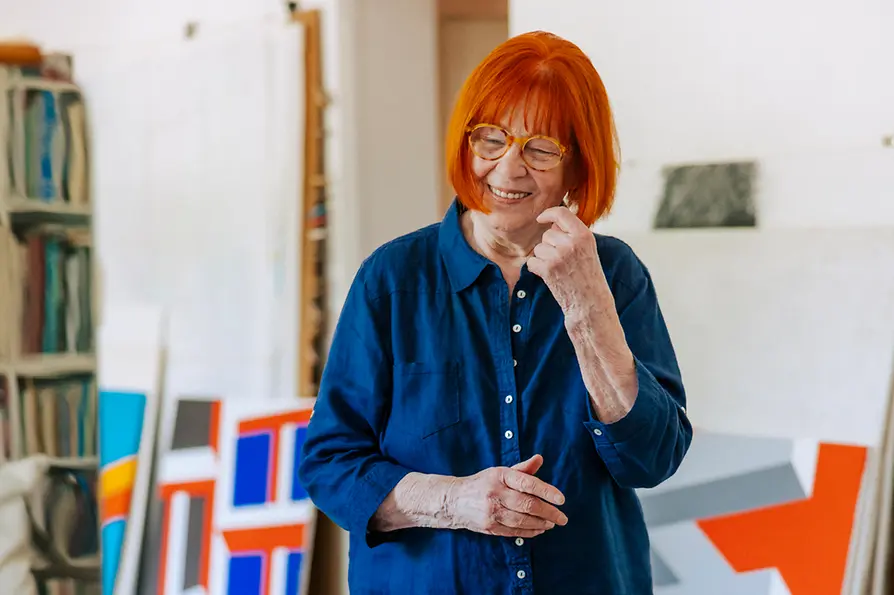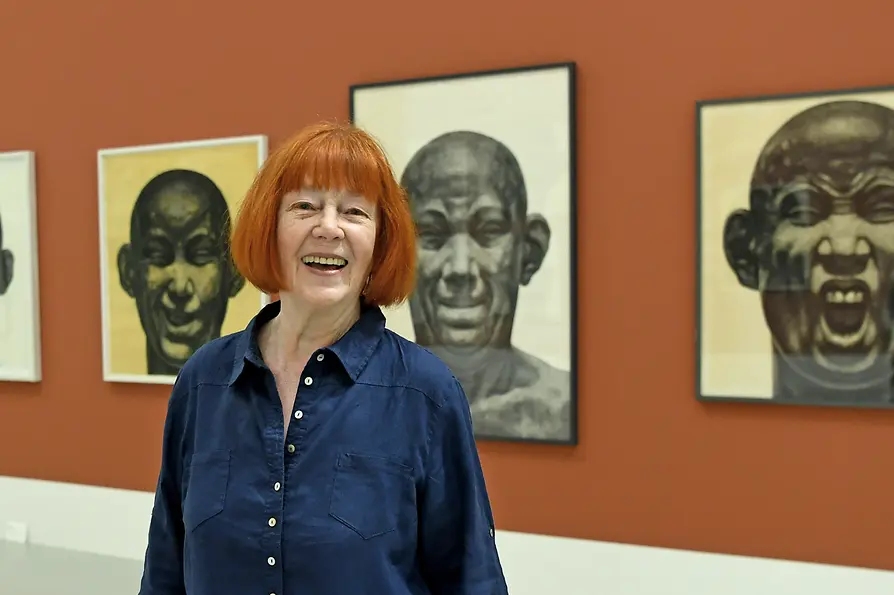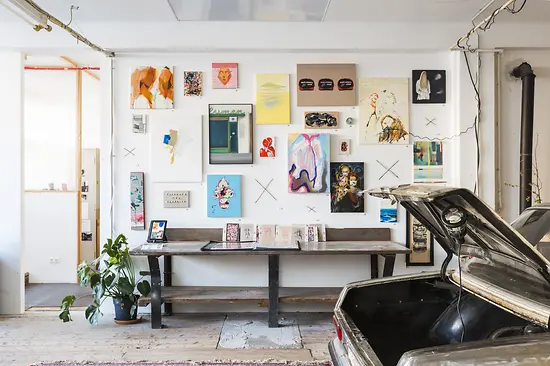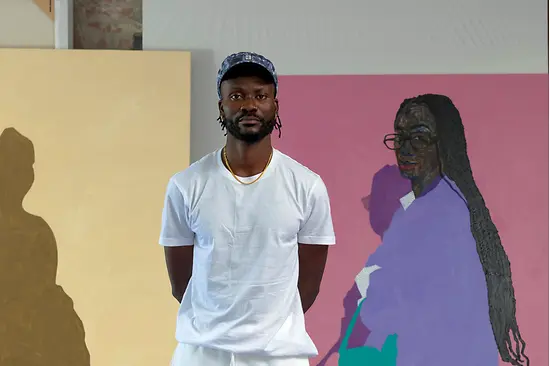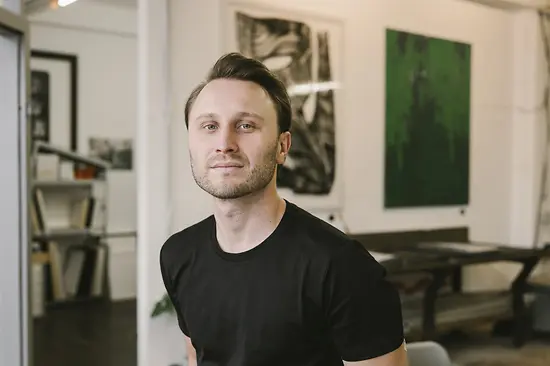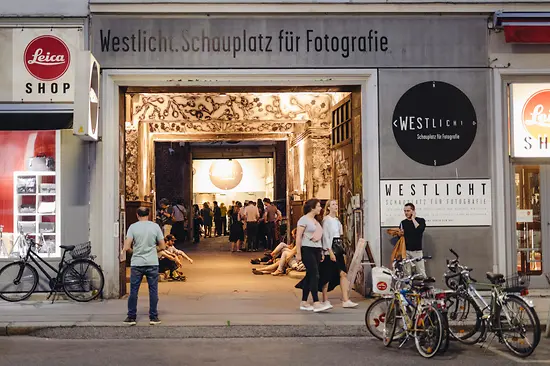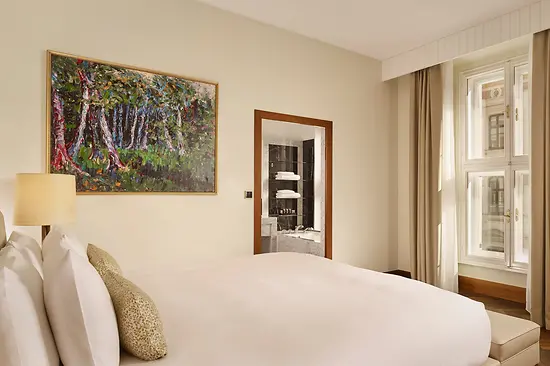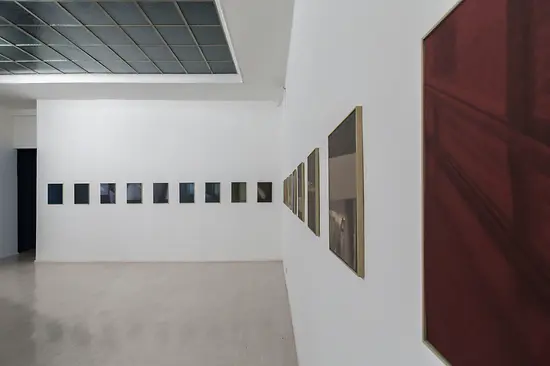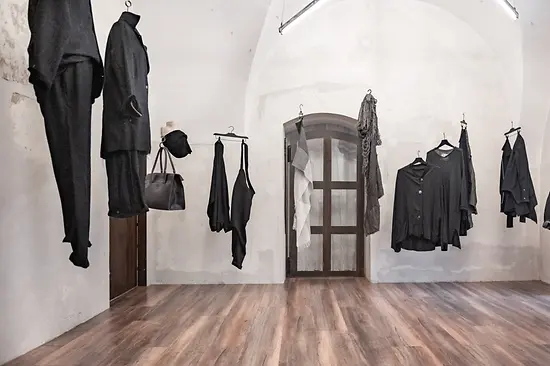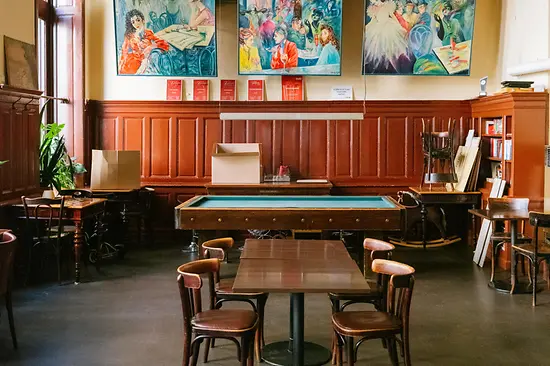Ten Questions for Florentina Pakosta
Interview: Karoline Knezevic
1. Where can we find your art?
Some of the works are part of public and private museum collections: Albertina, Leopold Museum, Belvedere and the mumok. Or at the Suppan Fine Arts gallery.
- Habsburgergasse 5, 1010 Wien
- info@suppanfinearts.com
- http://www.suppanfinearts.com
Opening times
- Tu - Fr, 11:00 - 18:00
- Sa, 11:00 - 14:00
2. Tell us a bit about your childhood in Vienna.
I was born in 1933 – a large part of my childhood fell victim to the terrible circumstances of the Second World War. Nevertheless, there were still some beautiful moments in my parents' house. I still live and work here today.
3. Your favorite place in Vienna?
I grew up in the twenty-second district near the Old Danube. I always enjoyed being here. Nature in the city is a gift that must be preserved.
4. You chose to stay in Vienna despite studying art abroad – why?
At that time, anyone who wanted to find out about contemporary painting had to go to France, Italy or the USA. But I never intended to live abroad for a long time.
5. Your path into the art world…
...was not an easy one. My parents wanted me to become a doctor. I took the strength to persevere from my own work.
6. How did you come to be the Secession's first female board member in 1975?
After graduation, it was common for people to join an artists' association. And, unlike the conservative Künstlerhaus, the Secession allowed women to become members. These modern-minded colleagues advocated on my behalf, too.
7. What did you want to draw attention to through your well-known male portraits?
Male power structures were generally prevalent. Irony and criticism is visualized in my large-format ruler portraits. Power can also seem ridiculous.
8. What are you working on right now?
Currently, I am working on three tricolor paintings. The Ukraine war has awakened memories of the Second World War in me that I would have preferred to forget.
9. What do the strong colors in your tricolor paintings stand for?
I choose very intense colors. Shapes with sharp corners and edges bring out the contrast even better. That's how I process my emotions.
10. What makes you feel positive about the future?
(Laughs) I'm almost 90, so by that age you have a certain sense of serenity.

